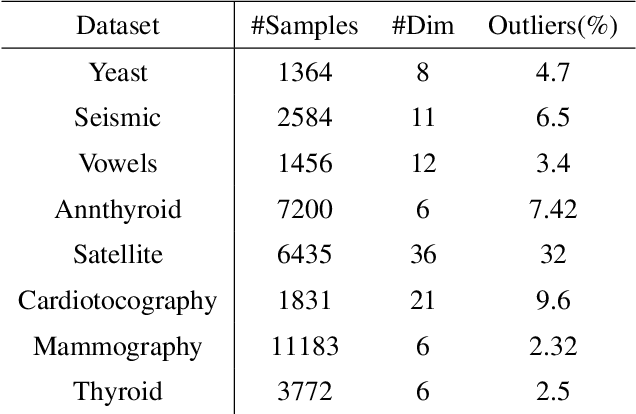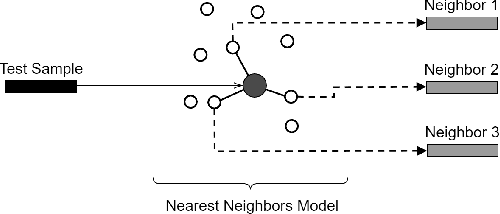Seffi Cohen
Forget What You Know about LLMs Evaluations - LLMs are Like a Chameleon
Feb 11, 2025Abstract:Large language models (LLMs) often appear to excel on public benchmarks, but these high scores may mask an overreliance on dataset-specific surface cues rather than true language understanding. We introduce the Chameleon Benchmark Overfit Detector (C-BOD), a meta-evaluation framework that systematically distorts benchmark prompts via a parametric transformation and detects overfitting of LLMs. By rephrasing inputs while preserving their semantic content and labels, C-BOD exposes whether a model's performance is driven by memorized patterns. Evaluated on the MMLU benchmark using 26 leading LLMs, our method reveals an average performance degradation of 2.15% under modest perturbations, with 20 out of 26 models exhibiting statistically significant differences. Notably, models with higher baseline accuracy exhibit larger performance differences under perturbation, and larger LLMs tend to be more sensitive to rephrasings indicating that both cases may overrely on fixed prompt patterns. In contrast, the Llama family and models with lower baseline accuracy show insignificant degradation, suggesting reduced dependency on superficial cues. Moreover, C-BOD's dataset- and model-agnostic design allows easy integration into training pipelines to promote more robust language understanding. Our findings challenge the community to look beyond leaderboard scores and prioritize resilience and generalization in LLM evaluation.
DFPE: A Diverse Fingerprint Ensemble for Enhancing LLM Performance
Jan 29, 2025Abstract:Large Language Models (LLMs) have shown remarkable capabilities across various natural language processing tasks but often struggle to excel uniformly in diverse or complex domains. We propose a novel ensemble method - Diverse Fingerprint Ensemble (DFPE), which leverages the complementary strengths of multiple LLMs to achieve more robust performance. Our approach involves: (1) clustering models based on response "fingerprints" patterns, (2) applying a quantile-based filtering mechanism to remove underperforming models at a per-subject level, and (3) assigning adaptive weights to remaining models based on their subject-wise validation accuracy. In experiments on the Massive Multitask Language Understanding (MMLU) benchmark, DFPE outperforms the best single model by 3% overall accuracy and 5% in discipline-level accuracy. This method increases the robustness and generalization of LLMs and underscores how model selection, diversity preservation, and performance-driven weighting can effectively address challenging, multi-faceted language understanding tasks.
FairTTTS: A Tree Test Time Simulation Method for Fairness-Aware Classification
Jan 14, 2025Abstract:Algorithmic decision-making has become deeply ingrained in many domains, yet biases in machine learning models can still produce discriminatory outcomes, often harming unprivileged groups. Achieving fair classification is inherently challenging, requiring a careful balance between predictive performance and ethical considerations. We present FairTTTS, a novel post-processing bias mitigation method inspired by the Tree Test Time Simulation (TTTS) method. Originally developed to enhance accuracy and robustness against adversarial inputs through probabilistic decision-path adjustments, TTTS serves as the foundation for FairTTTS. By building on this accuracy-enhancing technique, FairTTTS mitigates bias and improves predictive performance. FairTTTS uses a distance-based heuristic to adjust decisions at protected attribute nodes, ensuring fairness for unprivileged samples. This fairness-oriented adjustment occurs as a post-processing step, allowing FairTTTS to be applied to pre-trained models, diverse datasets, and various fairness metrics without retraining. Extensive evaluation on seven benchmark datasets shows that FairTTTS outperforms traditional methods in fairness improvement, achieving a 20.96% average increase over the baseline compared to 18.78% for related work, and further enhances accuracy by 0.55%. In contrast, competing methods typically reduce accuracy by 0.42%. These results confirm that FairTTTS effectively promotes more equitable decision-making while simultaneously improving predictive performance.
BiasGuard: Guardrailing Fairness in Machine Learning Production Systems
Jan 07, 2025Abstract:As machine learning (ML) systems increasingly impact critical sectors such as hiring, financial risk assessments, and criminal justice, the imperative to ensure fairness has intensified due to potential negative implications. While much ML fairness research has focused on enhancing training data and processes, addressing the outputs of already deployed systems has received less attention. This paper introduces 'BiasGuard', a novel approach designed to act as a fairness guardrail in production ML systems. BiasGuard leverages Test-Time Augmentation (TTA) powered by Conditional Generative Adversarial Network (CTGAN), a cutting-edge generative AI model, to synthesize data samples conditioned on inverted protected attribute values, thereby promoting equitable outcomes across diverse groups. This method aims to provide equal opportunities for both privileged and unprivileged groups while significantly enhancing the fairness metrics of deployed systems without the need for retraining. Our comprehensive experimental analysis across diverse datasets reveals that BiasGuard enhances fairness by 31% while only reducing accuracy by 0.09% compared to non-mitigated benchmarks. Additionally, BiasGuard outperforms existing post-processing methods in improving fairness, positioning it as an effective tool to safeguard against biases when retraining the model is impractical.
BagStacking: An Integrated Ensemble Learning Approach for Freezing of Gait Detection in Parkinson's Disease
Feb 24, 2024Abstract:This paper introduces BagStacking, a novel ensemble learning method designed to enhance the detection of Freezing of Gait (FOG) in Parkinson's Disease (PD) by using a lower-back sensor to track acceleration. Building on the principles of bagging and stacking, BagStacking aims to achieve the variance reduction benefit of bagging's bootstrap sampling while also learning sophisticated blending through stacking. The method involves training a set of base models on bootstrap samples from the training data, followed by a meta-learner trained on the base model outputs and true labels to find an optimal aggregation scheme. The experimental evaluation demonstrates significant improvements over other state-of-the-art machine learning methods on the validation set. Specifically, BagStacking achieved a MAP score of 0.306, outperforming LightGBM (0.234) and classic Stacking (0.286). Additionally, the run-time of BagStacking was measured at 3828 seconds, illustrating an efficient approach compared to Regular Stacking's 8350 seconds. BagStacking presents a promising direction for handling the inherent variability in FOG detection data, offering a robust and scalable solution to improve patient care in PD.
Boosting Anomaly Detection Using Unsupervised Diverse Test-Time Augmentation
Oct 29, 2021



Abstract:Anomaly detection is a well-known task that involves the identification of abnormal events that occur relatively infrequently. Methods for improving anomaly detection performance have been widely studied. However, no studies utilizing test-time augmentation (TTA) for anomaly detection in tabular data have been performed. TTA involves aggregating the predictions of several synthetic versions of a given test sample; TTA produces different points of view for a specific test instance and might decrease its prediction bias. We propose the Test-Time Augmentation for anomaly Detection (TTAD) technique, a TTA-based method aimed at improving anomaly detection performance. TTAD augments a test instance based on its nearest neighbors; various methods, including the k-Means centroid and SMOTE methods, are used to produce the augmentations. Our technique utilizes a Siamese network to learn an advanced distance metric when retrieving a test instance's neighbors. Our experiments show that the anomaly detector that uses our TTA technique achieved significantly higher AUC results on all datasets evaluated.
 Add to Chrome
Add to Chrome Add to Firefox
Add to Firefox Add to Edge
Add to Edge